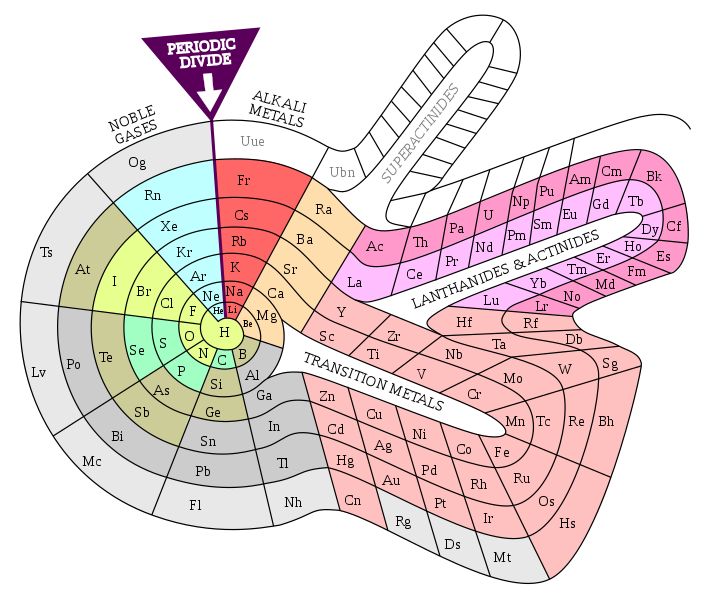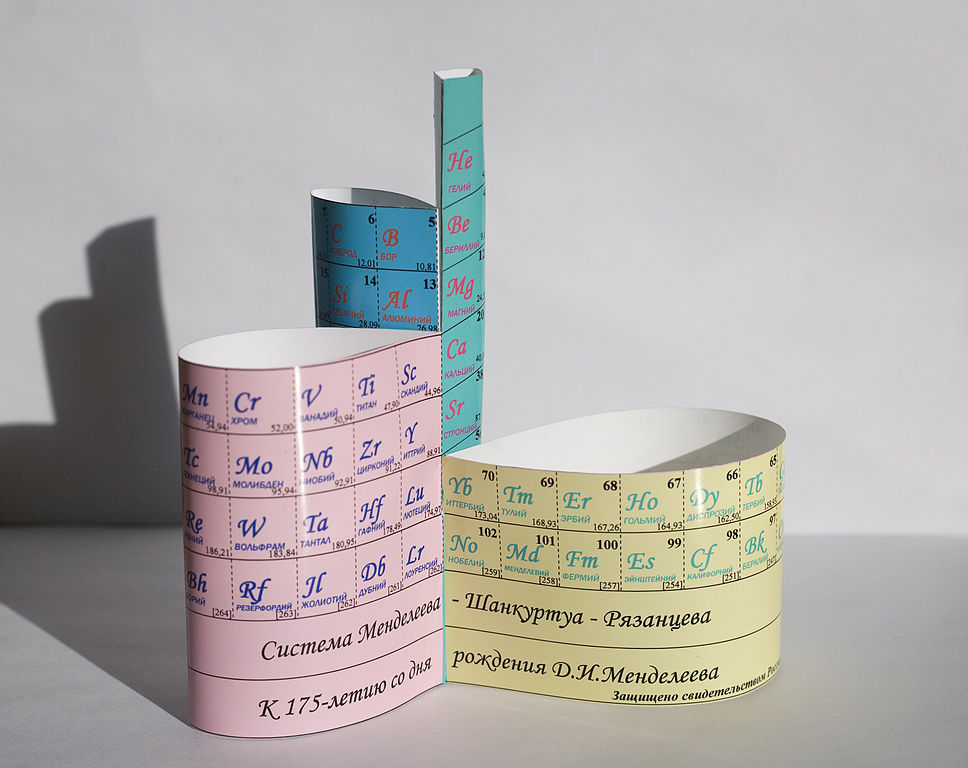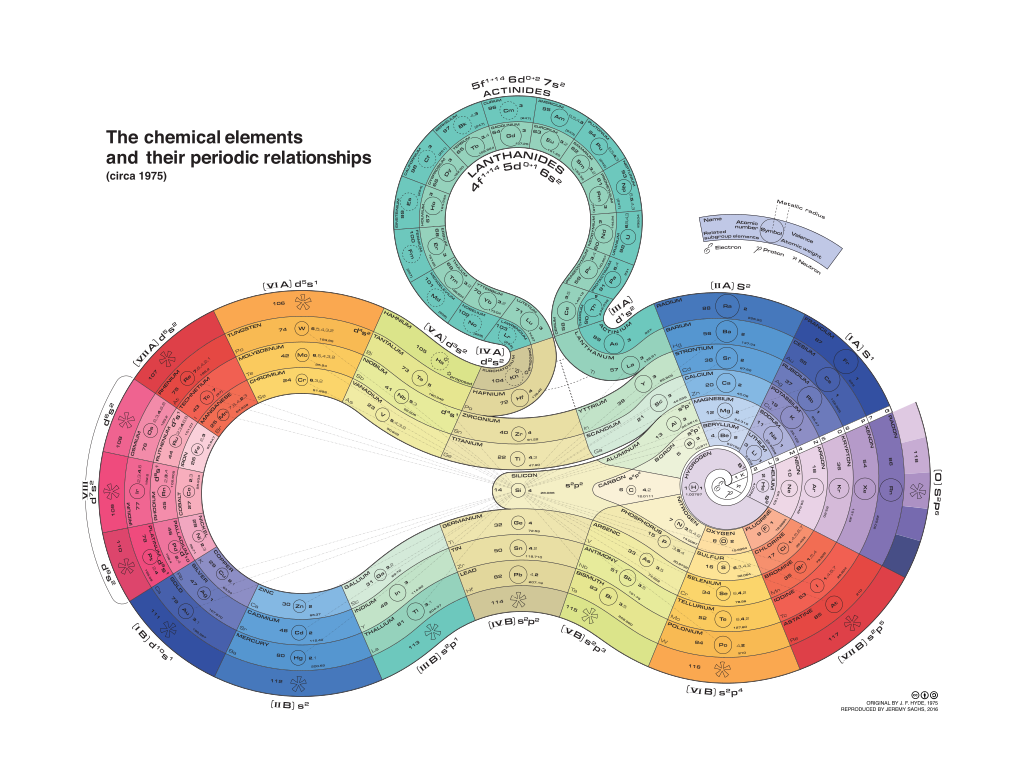Alternate Periodic Tables
Dimitry Mendeleev's Periodic Table is the standard:
.jpg)
Sir William Crooke's Periodic Table:

Walter Russell's Periodic Table:

Edgar Longman's Periodic Table

Theodor Benfey's Periodic Table:

Paul Giguère's Periodic Table:

James Franklin Hyde's Periodic Table:

Most with the exception of the Mendeleev table are arranged in a spiral pattern. Please feel free to add others if you find them, I know I have missed some.
Wow, that's incredible, I never knew they were so many variants of the "same" thing. Indeed, the shapes are extremely informative (almost as if each node of the flower of life, or corner of a geometry brings a new element). Here's one I love by Robert Grant which in my understanding comes from Walter Russell's principles:
https://www.youtube.com/watch?v=7G0Y3NkDrTE
The beauty being that there should still be more yet-to-be-known elements that should exist.:rolleyes:
Evidence that the standard periodic table is probably wrong:
https://www.youtube.com/watch?v=J1zNbWJC5aw
This seems as good a place as any to park this. As it relates to potential evidence of a fluid ether that comprises matter and the possibility subatomic particles flowing into and out of each other in a knotted pattern.
https://www.space.com/mystery-of-proton-neutron-behavior-in-nucleus.html?fbclid=IwAR1wyWfagrN4K7YBpNTjeGzT2hoxjIsO1QRlYo7f_j4U_kGqKMfL51VacYk
From above:
". . . recent experiments have shown that at any given time, about 20% of the nucleons in a nucleus are in fact outside their orbitals. Instead, they're paired off with other nucleons, interacting in "short range correlations." Under those circumstances, the interactions between the nucleons are much higher-energy than usual, he said. That's because the quarks poke through the walls of their individual nucleons and start to directly interact, and those quark-quark interactions are much more powerful than nucleon-nucleon interactions.
These interactions break down the walls separating quarks inside individual protons or neutrons, Hen said. The quarks making up one proton and the quarks making up another proton start to occupy the same space. This causes the protons (or neutrons, as the case may be) to stretch and blur, Hen said. They grow a lot, albeit for very short periods of time. That skews the average size of the entire cohort in the nucleus — producing the EMC effect."
- 44 Forums
- 3,672 Topics
- 16.4 K Posts
- 1 Online
- 23.5 K Members






